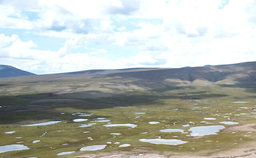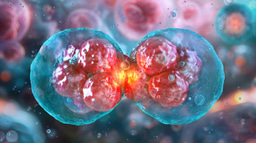Shedding New Light on SDGs
Published in Earth & Environment and Sustainability

The UN 2030 Agenda and the Sustainable Development Goals (SDGs), agreed upon in 2015 and targeting 2030, provide a key global framework for sustainability. With the midpoint of their implementation already passed, it is clear that more progress is needed. Numerous assessments indicate that the development trajectories for many of the 17 overall goals and 169 more detailed targets defined under the SDG framework are unsatisfactory.
I reviewed the opportunities and risks related to the management of an often-overlooked global environmental problem—light pollution—in the implementation of SDGs. The first task was to examine how light pollution has been considered, or ignored, by the SDG framework. The second task was to assess how successful light pollution abatement would contribute to the fulfilment of the SDGs and how the implementation of SDGs affects light pollution abatement.
Research demonstrates the growing impact of light pollution on human health, well-being, societies, cultures, and ecosystems. However, it turned out that despite its importance, light pollution is absent from the UN 2030 Agenda and the SDGs.
Light pollution is a growing global phenomenon that is often overlooked despite its impacts on the night sky and environment. It can interfere with astronomical observations, harm terrestrial and marine environments, and contribute to higher energy consumption and emissions. It disrupts natural cycles of dark and light, affecting both nocturnal and diurnal species, including humans. Addressing light pollution is crucial for preserving natural darkness, protecting biodiversity, and improving human health and environmental quality.
Responsible, efficient, and sufficient lighting is crucial for sustainable development, but Agenda 2030 and the SDGs fail to explicitly address lighting systems. Nevertheless, the SDGs’ focus on increasing clean energy production, improving energy efficiency, and building well-functioning infrastructure could encourage lighting solutions that prevent or reduce light pollution. However, my review highlighted that aiming for cheap energy together with the adoption of more efficient lighting technologies creates a risk of radically increasing the use of artificial light and increased levels of light pollution.
The review indicated a particular risk that implementing certain SDGs could exacerbate light pollution problems. Three SDGs stand out in this regard. First, SDG 7 aims to increase access to affordable and clean energy. However, this could lead to overly intense outdoor lighting, especially in areas previously lacking electricity. Second, SDG 9 includes a risk of developing infrastructures and industries that involve the installation of more extensive lighting. Third, similar concerns regarding elevated light use, particularly from new street lighting, arise with the implementation of SDG 11 on sustainable cities and communities. Managing these risks demands a comprehensive approach that incorporates regulatory, economic, and technological solutions to abate light pollution.
Many measures to minimize light pollution can be implemented with national and local level regulations, public lighting infrastructures, and intelligent technologies that provide sufficient illumination for specific activities and lighting zones. Key interventions include developing lighting technologies designed to minimize light spill and implementing smart lighting systems equipped with sensors to adjust both timing and brightness based on need. Intelligent lighting can enhance the quality of the outdoor environment and help respond to power shortages, balancing peaks in electricity consumption and resulting price volatility. Importantly, automated light-saving solutions require little to no effort from individuals if they are properly maintained and function as intended.
Alongside top-down approaches, measures strongly dependent on the activity and willingness of individual residents and consumers to use low-intensity lighting and avoid over-lighting are also needed. Motivating such activities requires more widespread public awareness of best illumination practices and light pollution, especially since current consumer marketing often encourages the purchase of stronger and brighter lights for safety and spectacle. Improvement of public awareness is needed. Similarly, policymakers, planning professionals, and lighting experts need to recognize the potential negative effects of lighting to develop regulations and other top-down management strategies aimed at curbing light pollution.
People living in intensively and continuously illuminated urban environments may not even recognize the lack of natural darkness as a problem. On the contrary, natural darkness is often unfamiliar and fear of darkness persists, whereas artificial lighting is associated with personal safety and societal progress. Experiences of natural darkness are framed as extraordinary exceptions – during blackouts or as exotic tourist attractions – rather than a part of the normal and natural living environment. This extinction of experience contributes to the shifting baseline syndrome where, based on their personal experiences, people consider the current situation to be the typical or normal state, even when the system has changed considerably compared to earlier states.
Partly because of the shifting baseline syndrome, socio-technical systems maintaining over-illuminated environments can be highly resilient against management strategies aiming for need-based, careful lighting and the restoration of natural darkness. Light pollution management questions the approach focused on maintaining the resilience of lighting systems. It calls for transformative resilience, where the focus shifts from “bouncing back” after a disturbance to “bouncing forward” to avoid it altogether.
A key opportunity for transformative resilience is provided by SDG 3 with new practices of lighting and non-lighting to support human health, particularly in terms of undisturbed sleep. Within the context of SDG 9 and SDG 11, innovations and infrastructure development should include smart lighting solutions and sustainable practices designed to minimize light while simultaneously supporting the creation of inclusive, safe, and sustainable cities. Especially for urban environments, this requires new types of narratives and practices of “dark design” or “dark infrastructure”. Transformative resilience in relation to environmentally focused SDGs 13–15 means minimizing environmental pressures and restoring terrestrial and aquatic environments towards their naturally nocturnal states.
Fundamentally, fostering transformative resilience within the context of sustainable development involves considering the interconnectedness between different goals. By addressing issues like light pollution during the planning and implementation of development goals, communities can bring in novel perspectives that challenge prevailing assumptions.
(Photo by Viktor Talashuk on Unsplash)
Follow the Topic
-
Discover Sustainability

A multi-disciplinary, open access, community-focussed journal publishing results from across all fields relevant to sustainability research whilst supporting policy developments that address all 17 of the United Nations Sustainable Development Goals (SDGs).
What are SDG Topics?
An introduction to Sustainable Development Goals (SDGs) Topics and their role in highlighting sustainable development research.
Continue reading announcementRelated Collections
With Collections, you can get published faster and increase your visibility.
Advancing Sustainable Development: The Role of Circular Economy Practices, Green Innovation and Corporate Responsibility
Achieving sustainable development, as envisioned in the United Nations’ 2030 Agenda, requires transformative solutions to reconcile economic growth with environmental and social imperatives. Circular economy practices, green innovations, and corporate responsibility stand out as critical drivers in this effort—reducing resource depletion, fostering innovation, and embedding accountability into global systems. Yet, their combined potential to accelerate progress toward the Sustainable Development Goals (SDGs) remains underexplored. This Collection aims to unravel these synergies, offering actionable insights for researchers, policymakers, and practitioners committed to a sustainable future.
Keywords: Sustainable Development, Circular Economy Practices, Green Innovation, Corporate Responsibility, Challenges and Opportunities in Sustainable Development.
This Collection supports and amplifies research related to SDG 7, SDG 12, SDG 13 and SDG 17.
Publishing Model: Open Access
Deadline: Apr 01, 2026
Transforming Education for Innovation, Sustainability, and Social Responsibility
Education plays a key role in addressing today’s global challenges, including climate change, social inequalities, and technological changes. As the world becomes more complex, education must transform to prepare students for the future. This Collection will explore how education can support innovation, sustainability, and social responsibility. By focusing on new teaching methods, policies, and institutional changes, this issue aims to contribute to meaningful educational reforms. Research in this area will help create a learning environment that fosters problem-solving, critical thinking, and ethical decision-making among students.
Technological advancements such as artificial intelligence, automation, and digital transformation are changing how people work and learn. To keep up with these changes, education must teach the skills needed for the future (SDG 9). Climate change is another major challenge that requires education systems to focus on sustainability and environmental awareness (SDG 13). Social and economic inequalities make it difficult for many people to access quality education and opportunities for success (SDG 10). Education must become more inclusive and fairer, ensuring equal opportunities for all (SDG 4). Additionally, global challenges like migration, cultural diversity, and human rights require an education system that promotes ethical responsibility and global citizenship (SDG 16). Many education systems are outdated, face funding issues, and struggle to adapt to modern needs, highlighting the need for research that guides policy improvements (SDG 4).
This Collection supports several United Nations Sustainable Development Goals (SDGs), including SDG 4 (Quality Education), SDG 9 (Industry, Innovation, and Infrastructure), SDG 10 (Reduced Inequalities), SDG 13 (Climate Action), and SDG 16 (Peace, Justice, and Strong Institutions). Education for sustainability fosters environmental awareness and responsible actions (SDG 13). Innovation in education drives technological and economic growth (SDG 9). Ensuring access to quality education promotes social equity (SDG 10). Encouraging social responsibility in education helps create a more just and ethical society (SDG 16).
We invite researchers to submit original papers for this Collection, welcoming various research approaches, including conceptual, empirical, and analytical studies. The scope of this Collection includes topics related to education, sustainability, and social responsibility. Suggested areas of interest include but are not limited to the following:
• Innovative Teaching Methods for the 21st Century
• Technology and Digital Transformation in Education
• Policy and Governance for Educational Reform
• Climate Change and Sustainability Education
• Equity and Inclusion in Education
• Ethics and Social Responsibility in Education
• Global Citizenship and Cross-Cultural Education
• Education for Employability and Skill Development
• Artificial Intelligence and Education
• Green Campuses and Sustainable Learning Environments
• Training for Sustainability and Innovation
• Community Engagement and Public Awareness through Education
• Promoting Green HRM, Marketing, Leadership, & Entrepreneurship in Education
The target audience for this Collection includes researchers, policymakers, educators, and professionals involved in educational reform, sustainability, social sciences, and technology. Contributions from different regions and contexts are encouraged to provide a global perspective on these issues. By fostering research on innovation, sustainability, and social responsibility in education, this Collection aims to contribute to global efforts in transforming education. We look forward to high-quality submissions that help shape the future of education.
This Collection supports and amplifies research related to SDG
Keywords: Educational Innovation; Sustainability Education; Social Responsibility; Digital Transformation; Global Citizenship; Policy Reform in Education; Inclusive Education; AI in Education; Climate Action; SDGs and Education
Publishing Model: Open Access
Deadline: Jan 31, 2026





Please sign in or register for FREE
If you are a registered user on Research Communities by Springer Nature, please sign in